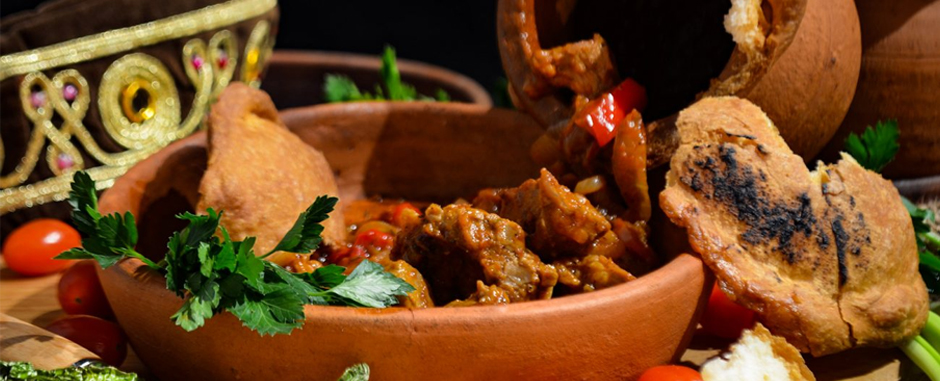What Can I Eat In
Cappadocia
While explaining the Cappadocian food culture, it is impossible not to mention the Hittite civilization. The Hittites are a people who came to Anatolia from the Caucasus in 1700 BC. The Hittites settled in Hattusa, north of Cappadocia, and spread from there. They established a great and powerful empire stretching from the Black Sea coast to Lebanon. Hattusha was also the capital of the Hittite State and is located near Çorum today.
During the Hittite period, the only place we know its name in today's small Cappadocia is Zuwanisa, that is Avanos. The production of test and amphora in Avanos dates back to that time. The most important product of the Hittite period was grapes and vine. So much so that even laws have been enacted in his name. A bunch of spikes and grapes seen in the hands of the king in a Hittite relief found explains the importance of these two products.

Cappadocia was occupied by the Persians in the 6th century BC. Then Alexander the Great comes and drives the Persians out of Anatolia. Greek culture taught with Alexander the Great gets stronger. Narince one of Turkey's most prestigious white grape varieties from one of the most important grape varieties in that period.
Mongolian invasion occurs in Cappadocia in the middle of the 13th century. The Mongols, destroying everything that comes in their way, also destroy the ligaments of the knee.
With the settlement of the Turks in the region, viniculture recovered again. Bektashism spreads in Cappadocia with Hacı Bektaş Veli, who came from Central Asia and settled in the region. The town where he lived and was buried after his death is the town known today as Hacı Bektaş Veli Town.


 cappadocia
cappadocia



